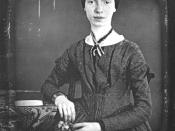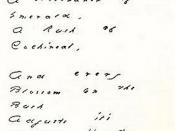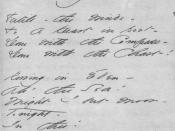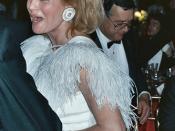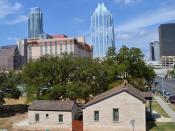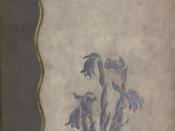Strong Hope "The Difference Between Despair"ÃÂ by Emily Dickinson focuses on the ideas of fear and despair. At first reading the poem is entirely about hopelessness. There is reference to a wreck, along with fear, and despair. While taking a deeper look you can see some hope glimmering in the last sentence. Dickinson puts on a show of sad realities that she later undermines with the a twisted sense of hope using a play on words. Dickinson uses careful word choices in this poem to get her idea of unhappiness across. Dickinson uses fear and despair in perfect chronological order. Fear being " a feeling of agitation and anxiety caused by present or imminent danger"ÃÂ (American Heritage College Dictionary 499).
While despair is "to be overcome by a sense of futility or defeat"ÃÂ (377). Looking at these words in Dickinson's poem she states that "the difference between Despair And Fear- is like the One Between the instant of a Wreck- And when the Wreck has been-"ÃÂ (1-4).
Dickinson is saying that fear is the moment before the wave of despair hits you.
To fully understand these two complicated words together you have to look at what word Dickinson uses to join them; Wreck. "Something shattered or dilapidated, a person who is broken down or worn out"ÃÂ (1557). You can not experience despair until you have encountered the fear of a wreck.
Moving on to the second stanza of this poem you believe you have left the fear and despair behind and moved onto contentment and an inanimate object. When one is "contented"ÃÂ one is "satisfied with things as they are"ÃÂ (300). This word has to do with a feeling far before fear or despair, it has to do with hope.
In the text Dickinson says "Contented as the Eye upon the Forehead of a Bust- That knows- it cannot see-"ÃÂ (6-8).
A bust resembles a person made to be stiff and hard, unbreakable, unable to think. The eye of this bust is content, but it cannot see what is in front of it. In a way the bust represents a type of hope, a not knowing. By using the bust to symbolize hope Dickinson has turned her idea of fear and despair to a secondary feeling. It shows that in all saddening experiences there is still the idea of hope if not a glimpse of it.
The word bust is surrounded by strong meaningful words that have a life all their own. Dickinson has capitalized the words as if they were names of people. These words are noticed by the reader causing them to use those words to interpret the meaning of the poem. The poem itself is only eight lines leaving a slight incomplete feeling, which leads you to analyze the poem long after reading it. Dickinson's poem needs to be carefully looked into to find a true meaning.
